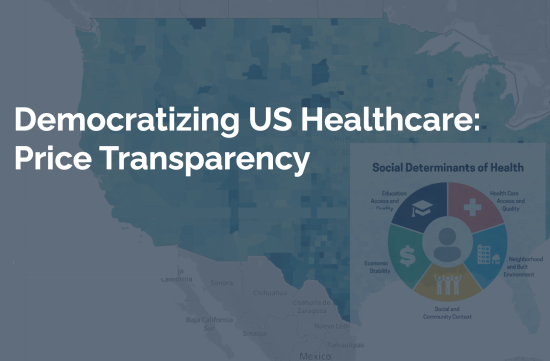Democratizing US Healthcare: Price Transparency
Motivation
9% of Americans are aware hospitals must disclose prices online.
48.7% Hospitals have Cash Rates less than Median Commercial Rates for a given procedure.
36.3% of Americans have either no insurance or High Deductible Plans (HDHPs).
In light of the CMS Hospital Price Transparency Regulation (45 CFR §180.50) implemented in 2022, there is a clear need to unlock public health insights since this mandate revolutionized access to healthcare pricing information. The regulation mandates that hospitals provide comprehensive, easily accessible, and understandable pricing information online, including the standard charges for items and services, as well as the negotiated rates with insurers. This groundbreaking policy unlocks healthcare prices like never before, empowering patients to make more informed decisions regarding their healthcare choices and expenses.
Dataset
We assembled a dataset of healthcare pricing data from Turquoise Health, along with Social Determinants of Health (SDoH) factors from various sources, such as the CDC/ATSDR SVI, CMS Cost Reports, Census American Community Survey (ACS), American Hospital Association (AHA), and others. The Turquoise Health dataset provided pricing information for 4,000 hospitals across 50 states, while the SDoH dataset incorporated crucial variables from diverse government and public health agencies.
Modeling
We employed Quantile Regression using the Least Squares method on a dataset with 586,095 observations. The model's performance was evaluated using the pseudo R-squared value. Our model explains approximately 16.76% of the variability in the dependent variable 'rate_log' as indicated by the pseudo R-squared value of 0.1676.
In conclusion, this Quantile Regression model demonstrates various relationships between the rate_log and the principal components used as independent variables. Many of these principal components have a statistically significant impact on rate_log, while a few do not show a significant relationship.
Real-World Benefit
The real-world benefit of this study lies in its potential to improve price transparency in the healthcare industry, ultimately leading to better-informed decision-making for both patients and healthcare providers. By uncovering associations between SDoH factors and procedure rates, this research could help to identify areas where policy interventions and targeted strategies could reduce healthcare costs and improve access to care.
Additionally, the insights gained from this study could empower patients, particularly those without insurance or with high-deductible plans, to make more informed choices about their healthcare expenses. This could lead to increased competition among healthcare providers, fostering an environment that encourages lower costs and higher quality care. In the long term, a better understanding of healthcare pricing dynamics can contribute to a more equitable and efficient healthcare system.











